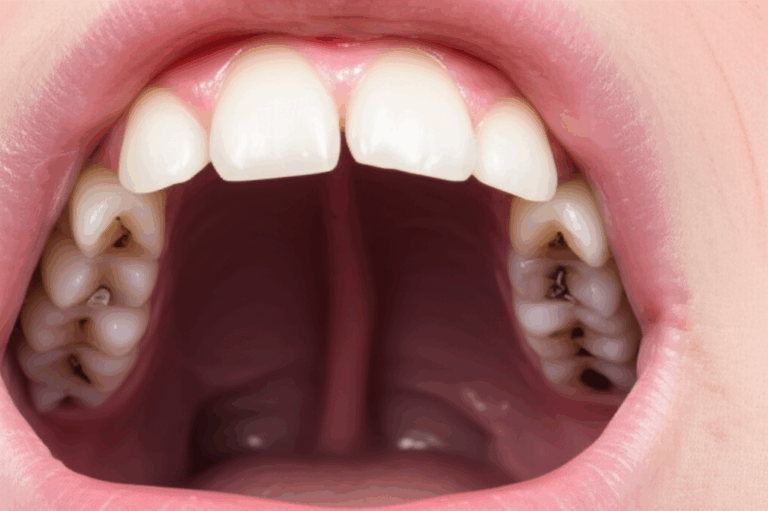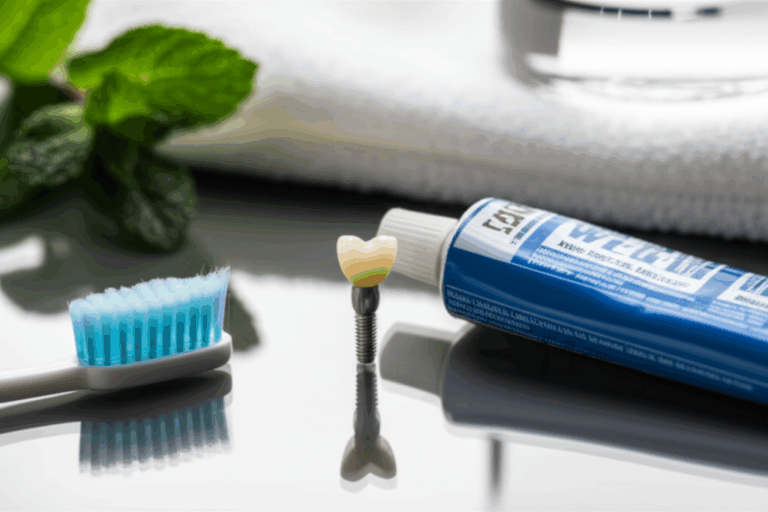
How Much Do 3 On 6 Dental Implants Cost
Are you wondering how much 3 on 6 dental implants really cost? Maybe you’re thinking about getting dental implants but are worried about the price. You’re not alone—I’ve been there myself, and I know how scary those numbers can look. This article is like your map. I’ll explain what 3 on 6 dental implants are, why people like them, how dentists figure out the prices, and what can change the final cost. If you want to make a smart choice for your teeth, keep reading—this guide gives simple answers, real examples, tips, and stories from my own life, so you can feel sure about what to do next.
Outline
- What Are 3 On 6 Dental Implants?
- Who Is a Good Candidate for 3 On 6 Implants?
- Why Do People Choose 3 On 6 Over Other Dental Options?
- How Does the Procedure Work?
- What Factors Affect the Cost of 3 On 6 Dental Implants?
- How Much Should You Expect to Pay?
- Are There Extra Fees Beyond the Implant Cost?
- Can You Save Money By Using an Overseas or china dental lab?
- What’s the Difference in Cost Between Zirconia, Emax, and 3D Dental Labs?
- Are There Financing Options to Help Cover Dental Implant Costs?
- How Can You Make the Most of Your dental care Investment?
- Final Thoughts: Is It Worth It?
What Are 3 On 6 Dental Implants?
When I first heard about 3 on 6 dental implants, I didn’t really know what that meant. Unlike a single implant or a full All-on-4 set, 3 on 6 implants offer something different for many people. Here, you get three bridges (like rows of teeth) held up by six implants in your jaw. Each bridge replaces a group of teeth, so your full upper or lower row is put back, strong and looking real.
It’s a newer idea that keeps things simple. It means you don’t need a separate implant for every tooth; instead, six strong implants hold three bridges. This way saves time, lowers the chance of problems, and can drop the cost.
For someone missing a lot (but not all) teeth, or if your old dentures just don’t work anymore, 3 on 6 dental implants are strong and look good. I’ve seen friends light up with real smiles again after getting these.
Who Is a Good Candidate for 3 On 6 Implants?
Not everyone can get this kind of treatment. Usually, your dentist will check if you’ve lost enough teeth to need full bridges but still have enough jawbone for six implants. I found out the hard way that your jaw health is a big deal—kind of like building a house on the right ground.
People who are healthy, don’t have gum disease, and don’t smoke (or can stop) are the best match. Age doesn’t really matter. I’ve seen people in their eighties get these implants and start feeling great. If you grind your teeth, have bone problems like osteoporosis, or other big health issues, your dentist will want to talk more. Still, most people with big tooth loss find 3 on 6 is their best hope.
Why Do People Choose 3 On 6 Over Other Dental Options?
When it comes to teeth, there are too many options. Crowns, bridges, dentures, single implants, All-on-4, and now 3 on 6—so why pick this one? What I’ve seen is how steady and real-looking these are. Unlike dentures that can move around or hurt, 3 on 6 implants don’t budge. You can eat steak, bite apples, and laugh without worry. No sticky glue, no taking them out every night.
Compared to All-on-4 implants, the 3 on 6 way often uses less jawbone and feels softer to bite down. It spreads the pressure better and feels more like your real mouth. And honestly, a nice smile matters. People tell me their new teeth look even better than their old ones.
Cost is a reason, too. 3 on 6 can be a bit cheaper than single implants for each tooth, and they’re usually easier to care for. If you want natural teeth but don’t need every one replaced, this is a great middle ground.
How Does the Procedure Work?
When I first saw the dentist about implants, I wanted to know every step ahead of time. Knowing makes you feel calmer. First, they take scans and X-rays. Your dentist uses these to make a plan, kind of like drawing up blueprints for a house.
When the plan is set, the six implants go into your jaw in spots that can hold the bridges. You’ll need to wait some months while your jawbone grows around the implants (this is called osseointegration—it just means your bone connects to the metal posts).
After a few months, you come back to get the real bridges put on. You might get fake teeth to wear while healing. When it’s all done, you’ll have a strong, good-looking smile that should last for years.
What Factors Affect the Cost of 3 On 6 Dental Implants?
The big question: why does the price jump so much? I found out there are five main reasons.
First, where you live changes prices. Dentists in big cities often charge more than those in small towns. Second, it’s about your dentist’s skill and training. If they went to a famous university, use new tools, or have their own high-tech zirconia or emax lab, the price goes up for quality.
Third, the stuff they use. A zirconia bridge costs more than a basic plastic one. If your case is tricky or you need extra surgeries (like to build up your bone), that costs more too. And then, lab fees. Some dentists use local 3D dental labs, others send your stuff to a china dental lab to save money. Each choice has good and bad sides.
How Much Should You Expect to Pay?
Get ready—the numbers are high, but I’ll make it simple. In the U.S., to fix one set (upper or lower teeth), the cost is usually between $12,000 and $24,000. If you want both upper and lower sets, it can be $24,000 to $48,000.
These numbers are based on my calls to clinics, reading price sheets, and talking with others. Some local places show lower prices, but be careful—what looks like a “deal” may not include lab fees, putting you to sleep, or fake teeth to wear during healing.
If you go outside the U.S. or your dentist works with a china dental lab, prices can drop 30-50%. But there are risks—more on that soon. Always ask for a full written price before you begin.
Are There Extra Fees Beyond the Implant Cost?
It’s easy to see the basic price and think that’s it. But, as I found out, there’s more. If you need teeth pulled first, that’s extra. You might need bone built up, sinus work, or gums reshaped. Each one adds up.
The bridge type matters, too. A custom zirconia bridge from a top lab costs more than a regular plastic one. For emax crowns that look amazing, plan to spend a bit more.
Lab fees, sleep medicine, check-up visits, even prescription pills after surgery—the small costs add up. Always ask your dentist if these are included or extra. It’s smart to check twice.
Can You Save Money By Using an Overseas or China Dental Lab?
When bills start piling up, it’s normal to ask if you can save by going overseas. Sometimes dentists will send your scans to a china dental lab or a place in another country that can make lots of bridges at once. Prices can go way down, even half or more.
Is it worth it? That depends. Sometimes your dentist works with a GOOD lab far away and everything goes fine. Other times, you’re just taking a chance. Talking to people far off can be hard, and if there’s a mistake, getting new parts can take weeks. If something needs a fix, it’s slower to fix from far away.
One of my cousins saved a lot using a china dental lab and is happy. But my neighbor waited six weeks for a fix and missed a big family event. Think about how much risk and delay you can live with before choosing.
What’s the Difference in Cost Between Zirconia, Emax, and 3D Dental Labs?
This is where what your bridge is made of really makes a cost difference. Zirconia is very strong and looks real. It’s what most people use now. If your dentist uses a zirconia lab, you might pay more first, but it lasts longer.
Emax is all about looks. It’s more see-through, shiny, and looks really nice on front teeth. Getting an emax bridge costs more because it takes more work to look that good.
If your dentist uses a 3d dental lab, the high-tech process can be faster, use less material, and sometimes costs drop. But if you want a lot of details or hand-finished work, this can still bring up the price. Really, your choice depends on what’s most important for you—super tough, super pretty, or most affordable?
Are There Financing Options to Help Cover Dental Implant Costs?
It’s true, the price can be shocking! But don’t feel stuck if it looks too high. Most dentists offer patient payment plans. These can split the big bill into smaller monthly payments, like paying off a car.
Outside companies like CareCredit or the dentist’s own office plans can help—from a few months to many years. Some even have no interest at first if you qualify. If you have dental insurance, it might pay for a small piece, though most calls these “cosmetic” and don’t cover much. Even a few hundred dollars helps, so check.
Ask the office staff for advice—they know the best ways to help patients pay for care.
How Can You Make the Most of Your Dental Care Investment?
When you’re spending big money, you want every bit to count. I always say start by learning. Read reviews, call a few clinics, and don’t be shy to ask about labs, materials, and warranties.
Take care of your new implants like treasure—after all, you paid a lot! Brush well, floss, and go for checkups. Some people skip this and end up needing repairs that cost even more.
Most important, trust yourself. If a price seems way too low, be careful. Pick a dentist who explains things, listens to you, and gives you a clear price for everything before you agree.
Final Thoughts: Is It Worth It?
For me, it all comes down to this: dental health is about how you live your life. If your teeth keep you from eating, talking, or smiling, getting implants can feel like getting your life—and joy—back. 3 on 6 implants are a balance—strong, nice-looking, and they last.
You do have to think about the upfront cost versus what you gain later. For me, getting implants changed my life—I eat what I like, smile proudly, and don’t worry about health problems from missing teeth. That boost in confidence? Really, it’s worth everything.
Most Important Things to Remember
- 3 on 6 dental implants give you steady, nice-looking teeth using six implants for three bridges.
- Average price is $12,000 to $24,000 for one set and up to $48,000 for both, depending on where you live, the materials (zirconia, emax), and which lab is used (local, 3D, or china dental lab).
- Ask for a full price list that shows extra costs (pulling teeth, bone building, lab, sleep medicine, aftercare).
- You can save with overseas labs, but watch out for problems in talking and waiting for your parts.
- Payment plans are common—don’t let the high numbers stop you from getting the dental care you need.
- Taking care of your implants each day helps them last and keeps your mouth healthy.
- Pick a skilled dentist and a trusted lab to get the best results; don’t just pick the cheapest.
- A strong, happy smile is always worth protecting!
Ready to take the next step? Now you have the info you need to choose the best path for your smile—and your wallet.








